Ijraset Journal For Research in Applied Science and Engineering Technology
- Home / Ijraset
- On This Page
- Abstract
- Introduction
- Conclusion
- References
- Copyright
Ultra-Low Power Circuit Design Techniques for Audio-Based Environmental Sensing in IoT Networks
Authors: Venkatesh A, Naveen Kumar V, Sathisha S B
DOI Link: https://doi.org/10.22214/ijraset.2024.64922
Certificate: View Certificate
Abstract
ULP circuit design consideration is critical in enhancing AS-based ESL in IoT networks essential in designing IoT devices to work with minimal power consumption. These designs enable the sensors to operate continuously interesting environments while at the same time utilizing methods like duty cycling, adaptive sampling, and wake-up circuitries. AFE parts help to minimize pre-ADC signal manipulation within the hardware and true and near-threshold processing, as well as subthreshold processing, decreases the power dissipation even more without affecting utility. Energy harvesting including, solar and piezoelectric handling ensures kinetic energy is accumulated for efficient functioning without batteries. Furthermore, incorporating lightweight machine learning (ML) models allows for audio classification and anomalous event detection on the network edge and with low data transfer. In combination, these developments bring more efficient and resource-saving IoT networks providing essential data for applications in environmental and climate change sensing, smart cities, public safety, and industrial security. This approach is essential when building IoT systems that are to last, to meet the increasing need for intelligent, self-sustaining, energy-efficient systems.
Introduction
I. INTRODUCTION
ULP Circuit Design is now an enabling technology for real-world implementation of audio-based environment monitoring in IoT networks. Auditory sensing for the environment in the Internet of Things IoT is responsive in a broad spectrum of domains that includes: wildlife tracking and Smart City establishment, safety and security in industries and academies, and many more. The need to monitor these applications is always on and may be established in areas that are difficult to access which means that battery life and power consumption play crucial roles in the design process. ULP techniques respond to the power consumption requirements to let IoT devices function for more significant periods without needing regular charging, which is crucial for IoT network scalability and affordability.
One major design consideration in ULP circuit design for audio sensing is to optimize the key system components such as AFE circuits, DSPs, and wireless transmitters that form the infrastructure facilitating the capture, process, and transmission of environmental audio data. Power reduction strategies like duty cycling, adaptive sampling and using event-driven wake-up circuits reduce the overall active time of the device while still making this efficient in detecting sounds of interest. These approaches enable the sensors to be powered down to low power modes until an acoustic event of interest is identified; as such, the battery life is elongated considerably.Besides circuit-level inventions, edge computing is an essential component of ULP audio-based sensing. This makes it possible to perform a large number of audio processing tasks directly at the sensor node—an essential element of edge computing that helps minimize the need to transfer data, which is a severe issue for wireless IoT devices in terms of power consumption. Lightweight DSP and low-power ML algorithms are installed at the edge nodes, therefore, they analyze the first level of sound data and classify or filter the audio stream considered important for the next stage to reduce the volume of transferred data. This approach of selective wake-up not only prevents wastage of power but also helps reduce the load of the network so that larger numbers of sensors can be incorporated into the network.
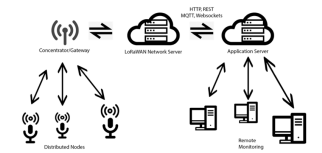
Figure-1: . System Proposal
This is important in the design of ULP circuits by providing other techniques in subthreshold and near-threshold circuit operation to effectively operate circuits at lower power levels without compromising on the performance of the device. Furthermore, energy harvesting and the use of solar, RF, or piezoelectric sources to keep IoT sensors running have meanwhile developed good potential to support sensors autonomously by converting energy available in the environment to electrical energy.
With IoT networks becoming larger and increasing in complexity, sustaining ULP circuit design to audio sensing is an effective way for constant environment monitoring. Using special ad circuit techniques, small-size ULP audio sensors are ready to work to their full potential with almost no energy required for most IoT applications.
A. Energy-Efficient Sensing
In specific, in ULP circuit design for audio-based-environmental sensing in IoT networks, low-power sensing is essential in making the device last longer in areas of constrained power/remote regions. The sensed data in applications involving wildlife tracking, noise mapping of cities, or safety monitoring of industries include continuous sensing of audio from the environment and recognition of the associated acoustic events. However, the conventional audio sensing circuits used in such systems can significantly deplete battery power because sampling, processing, and wireless data transmission, all consume a lot of power. This problem is averted through energy-efficient sensing techniques, which ensure that the IoT devices remain functional for more extended periods before battery recharge.
Another characteristic technique of energy-efficient sensing involves turning the device on and off using a strategy termed duty Cycling. Since the sensor can be turned on only during the sampling periods required, duty cycling helps to save a lot of power [1]. Related to this is adaptive sampling which is the ability to change the sampling rate in response to detected sounds; in other words, this draws less power as the sound environment is quiet, while at the same time, this can quickly switch to high power for short periods when the sounds increase.
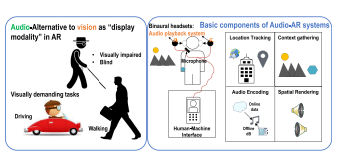
Figure-2: Audio offers an alternative interactive modality to vision
Energy-efficient sensing also incorporates wake-up circuitry, which constantly samples audio signal feed at extremely low power while the core sensing data processing sub-systems remain inactive until this identifies specific signal elements or patterns. The aforementioned technique of event-driven activation ensures that the device stays in sleeping mode, and only wakes up when an important audio event is recognized, thus saving power.
One more fundamental building block of energy-efficient sensing is the synergy between edge computing and lightweight digital signal processing (DSP). Edge computing on the actor node limits data transmission to a central server, one of the most energy-exhausting operations in wireless IoT devices since data processing needs to be done locally at the actor node. In addition, many of these devices use lightweight DSP algorithms to carry on preliminary signal processing and data compression, thereby only sending the necessary information.
Both of these energy-efficient sensing techniques enable sustainable continuous audio monitoring by ULP IoT devices for long-term deployments in various environmental sensing applications [2].
B. Duty Cycling For Power Saving
Duty cycling is one of the basic power management strategies in ultra-low power (ULP) circuit design especially used in audio-based environmental monitoring of IoT networks. As in wildlife surveillance, urban acoustic environments, or security CCTV, constant acoustic surveillance is highly desirable; however, this drains the battery very quickly. Duty cycling solves this problem by decreasing the time the audio sensor and its related circuits power up, or run, during inactive periods [3]. Duty cycling restricts the operation of the sensor, thus preventing wasteful use of energy; an essential feature when powering IoT devices in inhospitable or low-energy terrain.
As is common in most duty-cycled operations, the audio sensor is active only in defined time instants or sampling time frames. This means that instead of being permanently and constantly on, the sensor is on for a while and turns off, only to come back on to turn off after some time, depending on some prearranged time, or may turn on depending on certain conditions of the environment. When in sleep mode, the power consumption reduces to a minimal level that does not affect the incorporation of base and important frequency data. They are also capable of sampling the auditory environment during each active window for sounds or specific acoustic events of interest while minimizing total power consumption to conserve energy during that period.
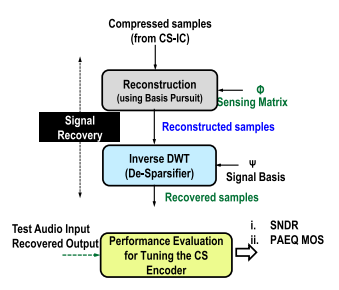
Figure-3: OFF-chip computation flow for signal reconstruction
This approach can be made more or less sensitive to changes in application needs by making the duty cycle intervals correspond to expected patterns of sound or activity in the monitored environment. For instance, if there is a high likelihood of a high level of sound for a certain number of hours, as is the case in a business district during the time, then the sensor can record at a closer interval. Whereas this increases its effectiveness in louder surroundings, in quieter environments, even longer intervals can be employed and the battery will last even longer.
The effectiveness of duty cycling is even higher when the ULP technique is used together with other techniques such as the event-driven wake-up circuitry [4]. These two methods function synergistically whereby the sensor can allow the system to go to full power mode only when specified sound patterns are recognized.
By duty cycling, ULP audio-based IoT sensors are also able to meet data capture demands while maintaining a power-aware system that can be continuously deployed for a long period in different environmental sensing applications.
C. Adaptive Sampling Techniques
Self-learning methods are used widely in the area of ULP circuits for monitoring the sound environment of IoT networks. All ambient sound monitoring applications where the sensor remains inactive for most of the time, but active during brief sampling intervals, are similar to life recording: wildlife tracking, noise surface mapping, or safety surveillance. Adaptive sampling makes headway with this by estimating sampling frequency according to sound activities, thus reducing the sampling frequency as much as possible during low activity while increasing this during significant audio events.
Adaptive sampling also permits the IoT device to switch between active listening intervals while fixed sampling methods do not [5]. In this case, if the sensor records little or no sound activity, then this can work at a lower sampling rate to conserve power through sampling. In this case, the sampling rate is increased to include more data during events of high acoustic activity so that this does not miss any events altogether. This flexibility makes adaptive sampling especially useful where excessive high-rate sampling will drain the battery power for instance in energy-limited applications.
To put into practice adaptive sampling usually involves low-power audio signal monitoring or pre-processing components that continually assess background noise and then adjust the frequency of the main sensor. For example, if a loud or an extraneous sound is noted, then this is possible to move the system to a high-resolution sampling mode for some time to capture important details of sound. The power of the system is then reduced to the modal state until a louder sound of the like is identified in the environment again [6].
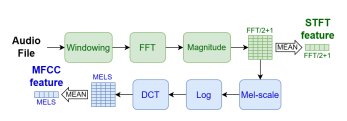
Figure-4: Extraction diagram for STFT and MFCC features.
This is done with the cooperation of other kinds of ULP techniques, including duty cycling as well as wake-up circuitry to boost energy efficiency. Compared to the other techniques, adaptive sampling does not require high-frequency sampling during quiet periods, which in turn decreases both data processing and transmission load.
Dynamic sampling strategies thereby render ULP audio-based sensing both sensitive and fast, especially in environments with varying noise levels. Being able to adapt to the environment's acoustical signature, this technique helps IoT devices save power whilst being ready to promptly respond to important sound occurrences, thus being suitable for long-term deployment across numerous environmental monitoring use cases.
D. Low-Power Analog Front-End (AFE) Design
Ultra-low-power Analog Front-End (AFE) design is a key area in low-power integrated circuits where sound-based environmental monitoring in IoT networks can be effectively employed. The AFE is the input interface of the sensor node that has the role of capturing, filtering, amplifying, and digitizing the analog audio signals that should be processed by the node’s processor. In audio-based IoT applications such as environment monitoring and security, the efficiency of the AFE is proportional to the power consumption of the entire sensor system and hence, requires optimized low-power AFE design for extended duration of operation in cases where batteries are fixed and there is no easy access to charging ports.
To create an efficient AFE design, some solutions such as low-power amplifiers or filters as well as ADCs are used. The amplifier increases the microphonics amplification of the weak signal but ordinary amplifiers can result in high power consumption. Low-power amplifiers, on the other hand, are quite suited for this task as their chief purpose is to amplify signals without drawing a great deal of electricity necessary for achieving high signal quality and power levels. After amplification, specific filtering of its various audio frequencies keeps the sensor tuned to specific sounds while discarding other noises that may otherwise clutter the environment; laughter, and wind among them [7]. This filtering allows only the most relevant information to decrease the load on the subsequent power utilization steps.
The ADC has the significant function of converting the filtered continuous-time analog signals into a digital form for processing. Low-power ADCs are intended to perform this conversion with minimal power consumption while being able to process data for resolutions used in high-quality audio without drawing too much battery power.
Certain ULP designs also employ the strategies that apply to the choice of the ADC such as sample-rate reduction in the same to conserve power with equal integrity.
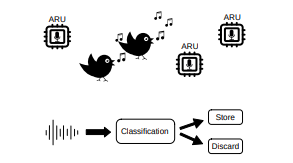
Figure-5: : Low-power autonomous recording units (ARU) distributed spatially to monitor birds. Bottom: audio sample classification on an ARU.
In conclusion, low-power AFEs allow the earpiece to filter and amplify or attenuate desired specific signals in steps identified at the hardware level without putting much load on the digital circuitry. In this way, the low-power AFE design helps capture and process audio signals which means that IoT devices can perform constant audio-based sensing without power consumption, which in turn means the devices can sense the environment and send reports for months and years without recharging [8]. This design approach can be seen as a baseline for ensuring that IoT devices continue to deliver high performance that is not affected by energy consumption in energy-limited applications.
E. Wake-Up Circuitry For Event-Driven Activation
Wake-up circuitry is one of the essential considerations in the approach toward ultra-low power (ULP) circuit design for audio-based environment monitoring in IoT networks. Originally developed for use in tracking animals, security, and environmental and acoustic surveillance applications, wake-up circuitry techniques allow a sensor device to function in a highly efficient, triggered-state mode. Instead of utilizing the main power always to keep the main processing unit operating, the wake-up circuit utilizes ultra-low power to observe background noise and only powers the main processor once certain sounds/events of interest are determined [9]. This reduces power consumption because the sensor operates on standby while awaiting signals from the engine.
The wake-up circuit usually contains easily triggered, low-wattage sound detectors that are always on the lookout for a couple of key patterns of sounds or threshold levels of sound, as it sucks up very little power. The wake-up circuitry is activated when a specific sound including a sound indicating the presence of a loud noise or sound signal defined during the setup is detected and the main processing unit takes over the detailed analysis of the audio data stream. This approach is particularly beneficial in situations where large amplitude events such as the breakage of glass in security systems or sounds produced by animals in wildlife monitoring are rare events. The current shedding of the main processor through wake-up circuitry is useful in preserving battery power and consequently increasing equipment utilization time when these sounds develop.
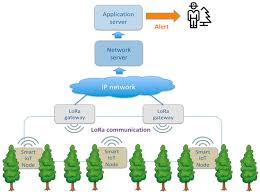
Figure-6: Monitoring Illegal Tree Cutting through Ultra-Low-Power Smart IoT Devices
Some of the wake-up circuits contain simple analog filters, and threshold detectors that do not need intricate processing to distinguish between random noise and other targeted sounds. For example, if an audio sensor is to be awakened by high-pitched alarms, the wake-up machinery can be made to be highly selective and wake up only when this multi-sensory input pitch is being detected/101, thus minimizing unnecessary awakenings and thereby preserving more energy.
This event-driven activation approach is more efficient when other ULP techniques such as adaptive sampling and duty cycling are employed. Altogether, these distinctive approaches enable the device to capture and analyze important audio events without keeping a high-power state perpetually [10]. Event-on triggering circuitry for wake-up allows IoT devices to satisfy low-power operation for ongoing distinct sound detection, thereby being usable and effective in power-limited ongoing uses.
F. Digital Signal Processing (DSP) And Edge Computing
Digital Signal Processing (DSP) and edge computing are the two critical approaches to ULP circuit design for employing audio-based environmental sensing in IoT networks [11]. Hence, both DSP and edge computation assist in saving power as data is first pre-processed and filtered locally on the sensor node reducing the frequent movement of full data, which is one of the most power-intensive activities in IoT devices. These techniques render sustainable audio sensing by continuously processing data while minimizing energy use in cases such as in wilderness wildlife, industrial sites, or noise pollution mapping of large urban spaces.
Highly efficient and lightweight DSP algorithms in IoT devices enable the pre-processing of sound data at the node level to extract desirable audio features like – frequency, amplitude and desired acoustic patterns before further processing or before transferring this data. These algorithms isolate definite audio events species vocalizations or signal events while excluding extraneous noise. Consequently, due to the removal of unwanted data communication traffic which is usually many times more than the required information, DSP significantly cuts down the need for power hence longer device usage.
DSP can be helped and is supplemented by edge computing to cover more extensive data processing right on the sensor node or a nearby gateway. In audio sensing, edge computing helps make real-time decisions on analyzed data without frequent interaction with centralized servers that demand frequent high-power use. For instance, a sensor node built with edge computing can categorize sounds or simply distinguish noises easily and detect or, at least, estimate threats by analyzing patterns of the sound produced. Due to its ability to transmit only specific information or specific data summaries, edge computing thus minimizes the load on a network and energy consumption for effective and immediate responsiveness of the IoT system.
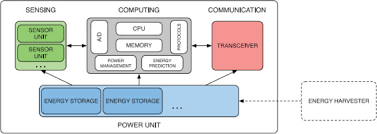
Figure-7: Ultra-Low Power Techniques in Energy
Moreover, edge computing improves system resiliency and decreases latency, guaranteeing that audio-based IoT devices are capable of timely reacting to significant events, on the condition that the availability of connectivity is sporadic or low. Combined, DSP and edge AI allow ULP IoT devices for always-on, intelligent audio surveillance, beneficial for extended usage of sensors in various environmental monitoring scenarios preserved by data quality and energy constraints [12]. These techniques ensure that audio-based IoT sensing is efficient, scalable, and flexible for real-world applications.
G. Data Compression And Transmission Optimization
Data compression and its transmission low power have been identified as key parameters for ultra-low power (ULP) circuit design in audio-based environmental sensing in IoT networks. In most IoT applications including wildlife tracking, noise mapping of cities, and security systems, audio data needs to be captured from sensors in low-power or distant locations. Nevertheless, constant and optimal data transfer, as well as processing and analysis of transferred information can cause high power consumption and network load, so the efficiency of data management is crucial. The audio data is compressed and the transmission is optimized enabling the IoT systems to minimize energy consumption as well as the longevity of the sensor nodes [13].
Reducing the size of the data before transmission is an effective way of making sure that the network carries less information, and less data, therefore data compression does affect the size of the audio files.
For example, audio samples can be quantized by eliminating such items as redundancy and other irrelevant information, but keeping general traits and significant frequency features of the sound safe. Low bandwidth encode processes which include lossy compression and low bitrate enhance data payload reduction while maintaining quality for analysis. This process helps to decrease energy consumption because data transmission occupies one of the most energy-consuming places in IoT devices.
Data compression is often said to complement transmission optimization since this deals with how and when information is transmitted. For instance, instead of transmitting all audio data unceasingly, the system can send all data only when they reach a certain threshold or can be activated by event-based scenarios only when some sound events are being produced. In addition to this, duty cycling and edge computing at the node level significantly reduce the frequency of transmission by sensors. To have a better understanding of the next part of the presentation, this will be best to click on the dropdown arrow beside Part III called “Analytics”. Nevertheless, edge computing means that data collected from audits can be pre-processed and analyzed at the edge node, which suggests that only summary or critical data may be transmitted reducing the need for data transmission.
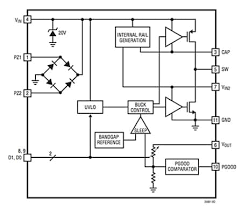
Figure-8: Ultra-Low Power Management for IOT Device
Another method of improving transmission is to coordinate or program the times at which data transfers are to occur to avoid traffic-congested networks with high throughput and low power loss due to retransmission. Furthermore, low-power wireless communication technology like BLE or LoRa gives the ability to transmit information from one device to another at long distances with less energy.
Data compression and transmission optimization collectively make up an energy-efficient solution that cuts down communication costs, protects network resources, and powers the battery for longer use [14]. In this way, the described techniques allow audio-based IoT devices to achieve sustainable monitoring and sensing for a long time even in difficult conditions and with limitations on powering, thus representing sustainable solutions for large-scale and remote environmental sensing.
H. Subthreshold And Near-Threshold Operation
Both the subthreshold and near-threshold operation are well-developed low-power strategies appropriate for ULP environment sensing using audio in IoT impression. By turning transistors ON or just near Vth, these techniques reduce power consumption by a large factor albeit at the cost of reduced processing speed as is useful in most audio sensing applications where real-time high-speed processing is not very much required.
In traditional circuit configuration, transistors are used in active regions or above the threshold voltage, which provides high speed and performance. But this mode draws a lot of current, which makes this unideal for battery-powered IoT devices for long-term monitoring applications. Subthreshold operation is sometimes called weak-inversion operation since this occurs when circuits use transistors with voltages below Vth without consuming much power. This approach reduces the current received to a significantly lower type which results in lesser power usage, however at a slower clock speed [15]. Regarding the environmental sensing through audio in these approaches, this speed reduction is well-tolerated since most of the tasks in this domain do not need to make high-speed calculations but rather identify patterns or thresholds in the sound environment.
A kind of selection between a threshold and zero operation is near-threshold operation, where the supply voltage is slightly higher than Vth. This lowers power demand while providing a sound mix of power usage/performance. Near-threshold design is beneficial for applications where only limited performance and response time are desirable, such as separating background noise and foreground sounds, which may activate further analysis or communication if specific sound patterns are found.
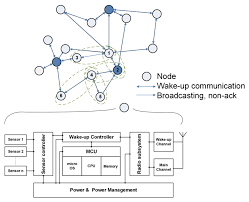
Figure-9: Low-Power Wireless Sensor Network
In IoT networks, low power or near-threshold operations help to increase battery life because there are many places where recharging could be difficult at best. These techniques help to minimize the device power consumption which, in turn, allows for maintaining unified and long-term tracking in different applications, such as wildlife movement monitoring, noise level mapping in cities, or security sensing of perimeters.
In conjunction with other forms of ULP techniques including the use of duty cycles and wake-up circuits, the use of subthreshold and near-threshold modes enables the design of an efficient low-power circuit for sensing audio. These techniques enable IoT devices to show desired performance with low energy consumption to support long-term functioning in various power-limited zones which is crucial in adopting IoT at large for environmental monitoring [16].
I. Energy Harvesting For Power Sustainability
This is one of the most critical techniques for maintaining the prolonged audio-based environmental sensing in IoT networks that require ULP whether to operate or necessarily for the recharging of batteries from the energy around. When IoT devices cannot be easily maintained due to location or harsh conditions, energy harvesting allows these devices to scavenge energy within the environment in the form of solar power, radio frequency (RF) signals, or mechanical vibrations to be used as the power source for continuous operation. This capability sustains the IoT sensor's detailed functional cycle, thus being recommendable for applications such as checking environmental conditions, tracking wildlife, and analyzing noises in urban areas [17].
This is possible to note that for some types of audio-based sensors, energy harvesting can be efficient using some specific methods. Of those, the concept of piezoelectric structures is the most exciting; these are special materials that can turn sound waves or mechanical pressure into electricity. These materials produce a small voltage when subjected to mechanical pressure or acoustic fields which enables the sensor to capitalize on sound energy available in the surroundings and convert this into electrical energy. Though the conversion of sound to power is likely to be small, this is adequate for use in standby devices or as a supplementary power source to the main power source, making energy use and battery use convenient.
Solar energy is another source that is widely used especially for IoT devices that are installed in outdoor environments. Solar cells or thin-film portable photovoltaic cells can absorb and store electricity during working hours to use this at night or charge batteries. In energy harvesting, RF energy harvesting allows a device to directly capture energy from the wireless signals this can detect such as Wi-Fi or cellular signals. While RF harvesting gives off low power, this has the important thing of being beneficial in urban environments with available RF signals.
Combining energy scavenging with other ULP circuit strategies such as load shaving, demand sampling, and wake-up circuits brings the most added value from the manner that the strategies ensure only the needful functions are active hence cutting down on power consumption [18]. For instance, a sensor could use stored solar energy for vital operations; piezoelectric power is only for low-power monitoring once the sound level crosses a specific pillar.
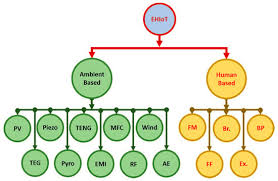
Figure-10: Ambient Energy Harvesting
Finally, energy harvesting for IoT networks relates to power self-renewability, meaning lasting functioning without continual battery recharge or replacement. Due to harvesting, power models of IoT audio sensors are less dependent and therefore feasible for large-scale, remote, and long-term environmental sensing.
J. Integration With Low-Power Machine Learning (Ml) Models
The inclusion of low-power ML into sensor nodes is a state-of-the-art innovation in developing ULP circuits for bioacoustic monitoring in IoT networks. In this way, this approach enables sensor nodes to perform a sound classification, anomaly detection, or pattern recognition locally, at the edge, through the execution of lightweight ML models, thus improving sensing capabilities at the edge, at the same time reducing data transmission and energy consumption. This is especially useful for audio sensing applications because IoT devices can pick specific sounds or changes or self-organize data and send only valuable specific sounds or changes instead of lots of random audio data. This is important for sustaining power inflows and expansion in IoT networks in areas that may not always be connected or that are limited in terms of space.
The use of low-power characteristics of machine learning models ensures that these models consume the least amount of memory and computing resources, though their results are accurate [19]. These models can be trained to separately identify inherent frequencies like whistle calls, alarms, machinery detouring, or even the sound of the human voice in case of an emergency. When trained, the models run within the sensor node, processing audio signals as they are collected in a real-time fashion. This local processing CNS reduces the need to transmit raw audio signals to a central server for analysis; this is a power-hungry process in IoT devices as wireless data transmission is the most energy-consuming function.
There is also low-power ML at the edge which engages algorithms such as k-nearest neighbors (KNN), decision trees, and lightweight neural networks because they can be solved on low-power processors. Moreover, the deployment of such ML models requires additional model compression approaches including pruning, quantization, and knowledge distillation that enable the drastic reduction of memory and computational demands of the ML models, and thus make them scalable to the constrained resources available in the sensor nodes.
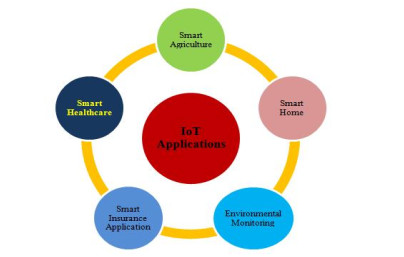
Figure-11: Advancement of Environmental Monitoring System Using IoT and Sensor
IoT networks gain more effectiveness and visibility when probed by ML-supported audio sensors. For example, a sensor might incorporate the anomaly detection technique to track noise levels in various industrial units so that the operators get a warning as soon as the noise pattern deviates from the norm suggesting equipment failure. In wildlife tracking, ML can understand the sound produced by each species and only send updates or sightings relevant to the species in the area while also saving network data and possibly device battery life.
This is critical to incorporate the LP-ML models into audio-based IoT sensors for constructing low-power smart audio-based sensors for large-scale energy-efficient sensing. The integration of ML alongside ULP circuit techniques allows decision-making to happen locally, without necessarily having to go through centralized processing; this is an ideal solution for making IoT networks work successfully across various IoT applications in different environments in the future [20].
Conclusion
ULP circuit design approaches are revolutionizing the use of acoustic environmental monitoring over IoT systems because they make this possible to maintain the sensor node network in a functional state for extensive durations in different hostile, inaccessible, or low-energy settings. Techniques like duty cycling, adaptive sampling, and wake-up circuitry have been adopted that make IoT devices less energy consumption, and the monitoring of the environment goes on for several years with the existing batteries. These methods enable the audio sensors to stand at low power states such as ‘sleep’ or lower sampling rates, thereby using high power stages essentially. Such measures as a low-power AFE combined with other parts, such as low-power amplifiers, filters, and “ADCs,” help control power consumption at the hardware level. Further, subthreshold and near-threshold operation reduces the total power utilization by enabling the transistor to work at lower voltages, which are advantageous in circuits that require low-speed processing. Some of the current techniques include energy harvesting that enables IoT devices to get power by harvesting energy from environments such as solar energy, RF, and mechanical energy hence supporting IoT devices without regular replacement of batteries. This decision effectively allows sound classification and identifies anomalies directly at the sensor nodes using lightweight ML models that also reduce the data transmitted. This not only helps in saving power but also facilitates more adaptive and flexible IoT systems. However, data compression and transmission optimization are far more important in lowering the so necessary energy for wireless communications by only transmitting the necessary information. Coalescing all these techniques leads to the formulation of a global energy-efficient strategy for IoT devices that are capable of addressing the emerging requirements of IoT applications while adequately functioning in various areas such as environment monitoring, wildlife tracking, noise mapping, and industrial applications. Therefore, the design aspects of ULP circuits are critical in developing network-of-things applications that can be adopted in the future and are suitable for power-constrained devices that are utilized with non-rechargeable batteries. Together, these methods help design and implement a better, greener, more self-sufficient IoT environment for large-scale implementations with reduced environmental burden and resource consumption. The advancement in the smart design of the circuits of ULP and energy management promoted audio environmental sensing in IoT useful in creating more possibilities across various business sectors while saving power. This becomes possible today to create long-lasting, energy-saving IoT structures for permanent uninterrupted functionality, for the advancement of technology, data capabilities, and environmental welfare.
References
[1] Fenton, S., 2023. An Ultra-Low Energy Solution for Large-Scale Distributed Audio Monitoring. IEEE Access, 11, pp.2156-2163. [2] Sabbella, H., Weerakoon, D.S., Gulati, M. and Misra, A., 2024, March. PA2BLO: Low-Power, Personalized Audio Badge. In 2024 IEEE International Conference on Pervasive Computing and Communications (PerCom) (pp. 154-163). IEEE. [3] Nair, A.R., Chakrabartty, S. and Thakur, C.S., 2021. In-filter computing for designing ultralight acoustic pattern recognizers. IEEE Internet of Things Journal, 9(8), pp.6095-6106. [4] Khan, T., 2023. Ultra-low-power architecture for the detection and notification of wildfires using the Internet of things. IoT, 4(1), pp.1-26. [5] Hazarika, A. and Rahmati, M., 2023. Towards an evolved immersive experience: Exploring 5G-and beyond-enabled ultra-low-latency communications for augmented and virtual reality. Sensors, 23(7), p.3682. [6] Gardaševi?, G., Katzis, K., Baji?, D. and Berbakov, L., 2020. Emerging wireless sensor networks and Internet of Things technologies—Foundations of smart healthcare. Sensors, 20(13), p.3619. [7] Kumar, G., Chatterjee, B. and Sen, S., 2022. CS-audio: a 16 pJ/b 0.1–15 Mbps compressive sensing IC with DWT sparsifier for audio-AR. IEEE Journal of Solid-State Circuits, 57(7), pp.2220-2235. [8] Yang, D. and Zhao, J., 2023. Acoustic wake-up technology for microsystems: a review. Micromachines, 14(1), p.129. [9] Bhattacharyya, S., Andryzcik, S. and Graham, D.W., 2020. An acoustic vehicle detector and classifier using a reconfigurable analog/mixed-signal platform. Journal of Low Power Electronics and Applications, 10(1), p.6. [10] De Simone, A., Barbisan, L., Turvani, G. and Riente, F., 2024. Advancing Beekeeping: IoT and TinyML for Queen Bee Monitoring Using Audio Signals. IEEE Transactions on Instrumentation and Measurement. [11] Turchet, L., Lagrange, M., Rottondi, C., Fazekas, G., Peters, N., Østergaard, J., Font, F., Bäckström, T. and Fischione, C., 2023. The internet of sounds: Convergent trends, insights, and future directions. IEEE Internet of Things Journal, 10(13), pp.11264-11292. [12] Calero, J.A.M., Rituerto-González, E., Luis-Mingueza, C., Canabal, M.F., Bárcenas, A.R., Lanza-Gutiérrez, J.M., Peláez-Moreno, C. and López-Ongil, C., 2022. Bindi: affective internet of things to combat gender-based violence. IEEE Internet of Things Journal, 9(21), pp.21174-21193. [13] Wen, J., Nie, J., Kang, J., Niyato, D., Du, H., Zhang, Y. and Guizani, M., 2024. From generative ai to generative internet of things: Fundamentals, framework, and outlooks. IEEE Internet of Things Magazine, 7(3), pp.30-37. [14] Ruotsalainen, H., Treytl, A. and Sauter, T., 2021, September. Watermarking based sensor attack detection in home automation systems. In 2021 26th IEEE International Conference on Emerging Technologies and Factory Automation (ETFA) (pp. 1-8). IEEE. [15] Meedeniya, D., Ariyarathne, I., Bandara, M., Jayasundara, R. and Perera, C., 2023. A survey on deep learning based forest environment sound classification at the edge. ACM Computing Surveys, 56(3), pp.1-36. [16] Huang, Z., Tousnakhoff, A., Kozyr, P., Rehausen, R., Bießmann, F., Lachlan, R., Adjih, C. and Baccelli, E., 2024, September. TinyChirp: Bird Song Recognition Using TinyML Models on Low-power Wireless Acoustic Sensors. In 2024 IEEE 5th International Symposium on the Internet of Sounds (IS2) (pp. 1-10). IEEE. [17] Wang, Z., Li, J., Jin, Y., Wang, J., Yang, F., Li, G., Ni, X. and Ding, W., 2021. Sensing beyond itself: Multi-functional use of ubiquitous signals towards wearable applications. Digital Signal Processing, 116, p.103091. [18] Chen, J., 2022. High performance and energy-efficient instruction cache design and optimisation for ultra-low-power multi-core clusters. [19] Saha, S.S., Sandha, S.S., Pei, S., Jain, V., Wang, Z., Li, Y., Sarker, A. and Srivastava, M., 2022. Auritus: An open-source optimization toolkit for training and development of human movement models and filters using earables. Proceedings of the ACM on interactive, mobile, wearable and ubiquitous technologies, 6(2), pp.1-34. [20] Mahmud, S., Parikh, V., Liang, Q., Li, K., Zhang, R., Ajit, A., Gunda, V., Agarwal, D., Guimbretière, F. and Zhang, C., 2024. ActSonic: Everyday Activity Recognition on Smart Glasses using Active Acoustic Sensing. arXiv preprint arXiv:2404.13924.
Copyright
Copyright © 2024 Venkatesh A, Naveen Kumar V, Sathisha S B. This is an open access article distributed under the Creative Commons Attribution License, which permits unrestricted use, distribution, and reproduction in any medium, provided the original work is properly cited.

Download Paper
Paper Id : IJRASET64922
Publish Date : 2024-10-31
ISSN : 2321-9653
Publisher Name : IJRASET
DOI Link : Click Here
 Submit Paper Online
Submit Paper Online

